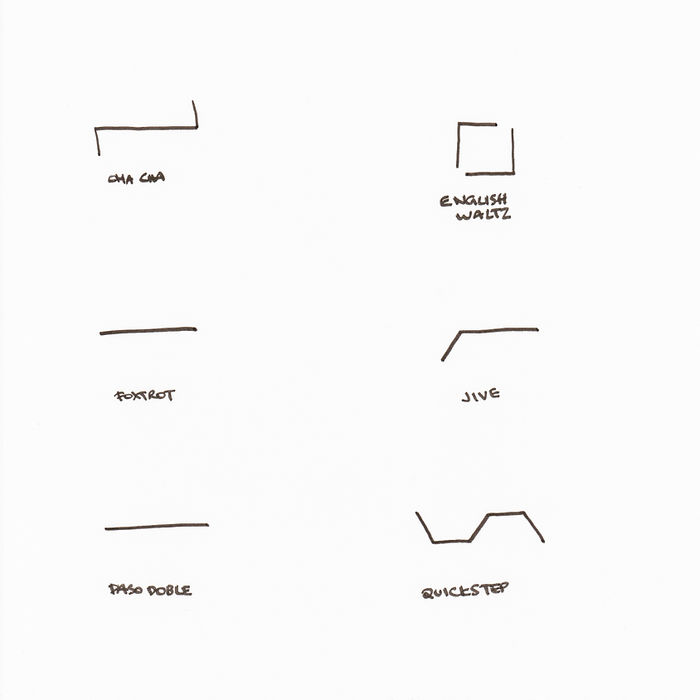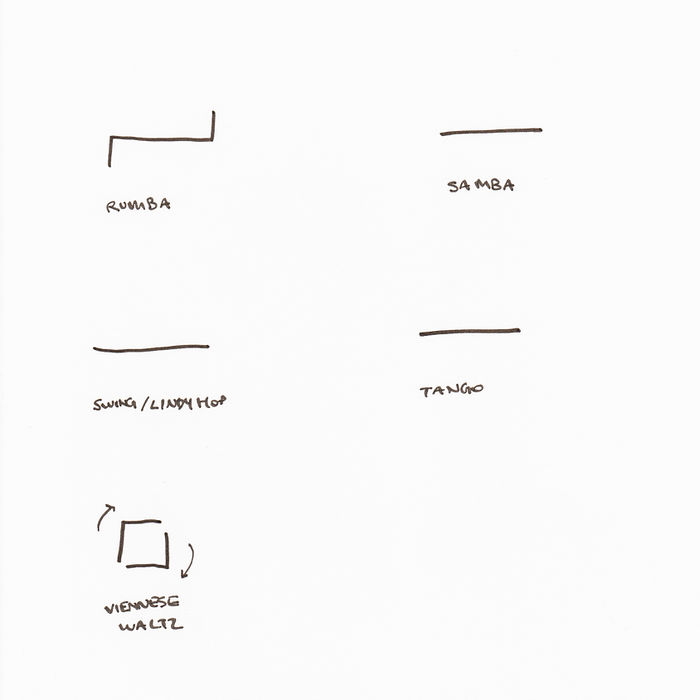Karina/special issue 02 individual research
10 MARCH
Swing / Jive midi
https://www.youtube.com/watch?v=v0ZOo2DMack
https://www.youtube.com/watch?v=E6XACt1s-z0
Other dances
Foxtrot https://www.youtube.com/watch?v=vW3w8kV-Xmo
Quickstep https://www.youtube.com/watch?v=stsBqdo9Svc
Samba https://www.youtube.com/watch?v=sY20ixaf2PM
Waltz https://www.youtube.com/watch?v=vCKU5gwXQRo
7 MARCH
Time Perception in Dance - essay for Methods
https://pzwiki.wdka.nl/mediadesign/Karina/time_perception_in_dance
MARCH
Experiment 1:
- List all dance styles
- Illustrate movement using choreology
- Explain rhythm in words
- Illustrate rhythm using choreology
- Analyse differences between dances
22 FEBRUARY
https://pzwiki.wdka.nl/mediadesign/Joana%27s_Thesis_Outline
21 FEBRUARY
Choreomusicology (list of artists that create choreologies)
https://en.wikipedia.org/wiki/Choreomusicology
Merce Cunningham - created choreology (worked with Cage and Tudor)
https://en.wikipedia.org/wiki/Merce_Cunningham
Feuillet notations
https://en.wikipedia.org/wiki/Beauchamp-Feuillet_notation (17-18th century)
http://www.baroquedance.com/research/dancenotation.htm
http://www.contemporary-dance.org/how-to-write-feuillet-notation.html
George Balanchine (ballet choreographer)
https://en.wikipedia.org/wiki/George_Balanchine
Rudolf Benesh - mathematician created movement notation
https://en.wikipedia.org/wiki/Rudolf_Benesh
https://en.wikipedia.org/wiki/Benesh_Movement_Notation
Igor Stravinsky notation
https://en.wikipedia.org/wiki/Igor_Stravinsky
Lebanotation 1920s, still used today
https://en.wikipedia.org/wiki/Labanotation
Still used today because it takes many factors into consideration
- Direction and level of the movement
- Part of the body doing the movement
- Duration of the movement
- Dynamic quality of the movement
Anne Teresa de Keersmaeker - dancer that draws dance with footprints
https://www.moma.org/calendar/performance/1580
https://www.youtube.com/watch?v=E1OHl8_MPEg (Performance 13)
13 FEBRUARY
http://www.luckytv.nl/gaga-dazzles/
1 FEBRUARY
Experiment
What would happen if we broke down the structure / order of the dance?
How will that effect the flow?
How will our memory work?
Will we be more conscious of what we are doing?
Will I need to let my parter lead me more? More trust if less anticipation?
Task:
- Select 6 steps from a Jive
- List them in order using names / terminology and number them 1-6
- Roll a die and note down the outcome
- Repeat step 3 a couple of times
- Rewrite steps in new order using step names / terminology
- Dance the re-constructed Jive
- Describe experience (use questions from above)
Jive first 6 steps
- Basic Turn
- Follow the Leader
- American Swing
- Bump
- The ‘1-2’
- Windmill + Spanish Arms
New order
3 - 1 - 6 - 2 - 4 - 2
American Swing
Basic Turn
Windmill + Spanish Arms
Follow the Leader
Bump
Follow the Leader
FEBRUARY
https://www.ted.com/talks/camille_a_brown_a_visual_history_of_social_dance_in_25_moves#t-264680
{{#ev:youtube | https://www.youtube.com/watch?v=OO6oPDwDzQs}}
Marian Wieczysty - Tańczyć może każdy (1986)
Slawomir Mrozek - Tango (1986)
http://www.e-teatr.pl/pl/programy/2013_12/56364/tango_teatr_mickiewicza_czestochowa_1986.pdf
CYMATICS: Science Vs. Music - Nigel Stanford
https://www.youtube.com/watch?v=Q3oItpVa9fs



